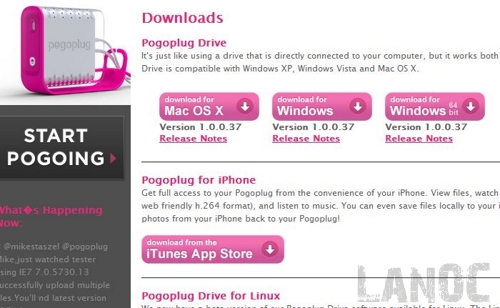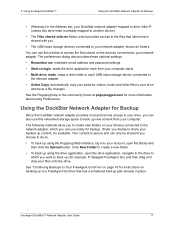

- SEAGATE DOCKSTAR WITHOUT USING POGOPLUG HOW TO
- SEAGATE DOCKSTAR WITHOUT USING POGOPLUG SERIAL
- SEAGATE DOCKSTAR WITHOUT USING POGOPLUG SOFTWARE
SEAGATE DOCKSTAR WITHOUT USING POGOPLUG HOW TO
I bought a Dockstar from eBay a couple of days ago and waded through every post in order to learn how to implement a 24/7 server for my SBS and five connected Rio/Sonicblue/Dell receivers (running Slimrio) all in a Windows environment.Ī combination of the instructions and guidance, and problems that others posted and resolved enabled the install to be almost seamless. Stunning work on the SqueezePlug project. Thomas Ralphy, Richman and everyone else. You can mount it then with e.g.: mount /dev/sda1 /data.

So if you like to mount something to a directory named "data" you have ro create the directory data first. The directory (mount-point) must exist in the file system. You should better user the UUID of the drive to mount from /etc/fstab, because otherwise the device-names may be mixed.ħ. If you like to mount the drives at boot-time, you have to change the /etc/fstab fileĦ. You can do this by hand if you type: mount e.g. You can do this from >setup>library, as if it was a USB drive, orĤ. You have to mount the devices befor you can use them.ģ. If you like to boot from a Goflex Sata-HD you have to use the left dock.Ģ. The problem is, that the drives are not mounted automatically!ġ.
SEAGATE DOCKSTAR WITHOUT USING POGOPLUG SOFTWARE
How can I get the software to recognise these two drives? When I do a bklid I see that the two drives are established as /dev/sdb1 and /dev/sda1. Also I can not access them via my computer, whilst the computer is recognising the squeezeplug server via the network. They do not appear as options in the set up menu in the library configuration in the setup menu. I currently can not access the two drives that I have attached to my Goflex Net via the eSata ports.
SEAGATE DOCKSTAR WITHOUT USING POGOPLUG SERIAL
Also, the onboard serial console has a header already attached, no soldering necessary.

It’s a pretty nice machine, a lot better than my old NSLU2 – and it has the bonus of being powered on whenever it’s connected to AC power instead of having a power button, so it’s self-restoring after power outages without hardware modification. It’s got a 1.2Ghz Marvell Kirkwood ARM processor, 128 megs of RAM, and gigabit ethernet. I used the kernel patches from the second link in the post, and the precompiled u-boot and blparam from the Plugbox Linux guys. I couldn’t get the Sheevaplug Debian squeeze installer or lenny rootfs image to work but if someone tried harder they could surely do it I didn’t care enough as I already had the working Gentoo system. I’m running Gentoo on my Dockstar, got it for $20 at Woot.


 0 kommentar(er)
0 kommentar(er)
